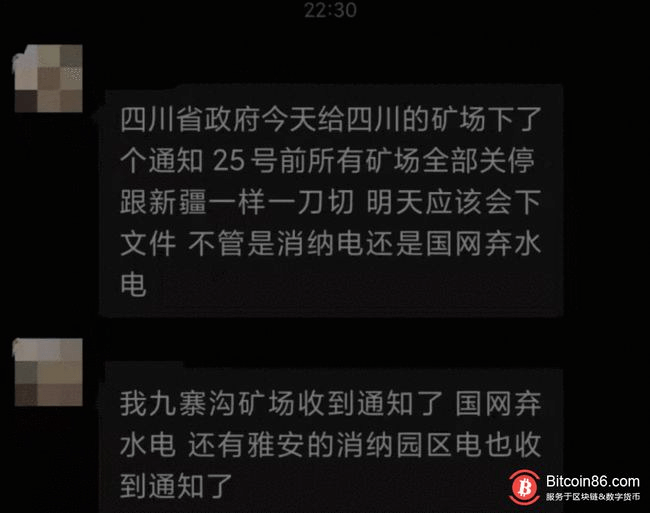Theoretically, the limit of low temperatures in the universe is called ‘absolute zero’, the value of which is 0 K, converted to the commonly used temperature unit of -273.15 degrees Celsius.
Through theory we can deduce the temperature limit in the universe, for high temperatures, the maximum mass of microscopic particles moving at the speed of light is the limit of high temperature and its value is 10^32 K, known as the Planck temperature – which corresponds to the temperature of the black holes as they evaporated or to the temperature of the universe immediately after the Big Bang.
Theoretically, the limit of low temperature in the universe is called “absolute zero”, the value is 0 K, converted to the commonly used temperature unit of -273.15 degrees Celsius. And to prove the existence of absolute zero, mankind has had to conduct a lot of experiments over a very long time and the story of this limit value is also quite interesting from a scientific perspective. because when the concept was introduced, no one could conduct experiments near that temperature. But the specific concept of absolute zero was not formed overnight, instead it was studied, observed and concluded by generations of scientists. As early as 1702, the French physicist Guillaume Amonton questioned whether there was a limit to cold. He improved a thermometer that used air and mercury. The volume of air changes with temperature, causing some of the mercury to move to show the scale. The minimum value of the thermometer has a limit, which is the point 0 (according to today’s calculations, it is about -240 degrees Celsius).  Until the end of the 18th century, many physicists tried to discover this low temperature limit. In 1785, Jacques Charles, a French physicist discovered the relationship between the temperature and the volume of a gas at constant pressure. In his experiments, he found that in the case of constant volume, for every 1 degree Celsius decrease, the pressure of the gas will decrease by 1/273 of its pressure at 0 degrees Celsius. According to this rule, when the gas temperature drops to -273 degrees Celsius, the pressure becomes zero – vacuum environment. Later, the English physicist William Thomson (ie 1st Baron Kelvin) gave the first formal form based on the summation and speculation of his predecessors about the concept of absolute zero – understood as a state in which the interior of the object can be reduced to zero and completely stop the motion of the molecules. Accordingly, one of the ultimate goals in the field of thermodynamics is a great battle to challenge absolute zero. And of course, this goal cannot be achieved overnight.
Until the end of the 18th century, many physicists tried to discover this low temperature limit. In 1785, Jacques Charles, a French physicist discovered the relationship between the temperature and the volume of a gas at constant pressure. In his experiments, he found that in the case of constant volume, for every 1 degree Celsius decrease, the pressure of the gas will decrease by 1/273 of its pressure at 0 degrees Celsius. According to this rule, when the gas temperature drops to -273 degrees Celsius, the pressure becomes zero – vacuum environment. Later, the English physicist William Thomson (ie 1st Baron Kelvin) gave the first formal form based on the summation and speculation of his predecessors about the concept of absolute zero – understood as a state in which the interior of the object can be reduced to zero and completely stop the motion of the molecules. Accordingly, one of the ultimate goals in the field of thermodynamics is a great battle to challenge absolute zero. And of course, this goal cannot be achieved overnight.  Michael Faraday. The first major figure in this race was Michael Faraday. By 1845, he had obtained various forms of liquid gases through primary compression. With his technology at the time, he was able to achieve temperatures as low as -130 degrees Celsius. However, during that time he was still unable to liquefy some gases such as oxygen, nitrogen and hydrogen. This was due to theoretical limitations at the time, so Faraday believed that these gases were “permanent gases” and could not be compressed into a liquid state. In the late 1870s, French physicist Louis Paul Cailletet pioneered the production of liquid oxygen and liquid nitrogen, which could be obtained at low temperatures of -183 degrees Celsius and -196 degrees Celsius, respectively. To achieve this, Louis Paul Cailletet applied the Joule-Thomson effect.
Michael Faraday. The first major figure in this race was Michael Faraday. By 1845, he had obtained various forms of liquid gases through primary compression. With his technology at the time, he was able to achieve temperatures as low as -130 degrees Celsius. However, during that time he was still unable to liquefy some gases such as oxygen, nitrogen and hydrogen. This was due to theoretical limitations at the time, so Faraday believed that these gases were “permanent gases” and could not be compressed into a liquid state. In the late 1870s, French physicist Louis Paul Cailletet pioneered the production of liquid oxygen and liquid nitrogen, which could be obtained at low temperatures of -183 degrees Celsius and -196 degrees Celsius, respectively. To achieve this, Louis Paul Cailletet applied the Joule-Thomson effect.  James Dewar. The next important person was a Scottish chemist and physicist – James Dewar, who would challenge hydrogen, the last “eternal gas” at the time. Scientists at the time expected to be able to produce liquid hydrogen at as little as -250 degrees Celsius. This temperature was an impossible challenge with the technology and equipment at the time, so Dewar had to invented new devices to be able to conduct this research. His plan was to use a gas that could be compressed and liquefied at room temperature, then allowed it to expand and return to a low temperature and then continue to use this temperature to liquefy other gases that are more difficult to liquefy . In this way, after a series of stages, it is possible to reach a temperature low enough to liquefy the hydrogen. But to do that, Dewar was forced to create new equipment and tools for research, which required a lot of money. So Dewar demonstrated some of the unique properties of liquefied petroleum gas to guests in the Royal Society’s laboratory, and used experiments to attract investors’ attention.
James Dewar. The next important person was a Scottish chemist and physicist – James Dewar, who would challenge hydrogen, the last “eternal gas” at the time. Scientists at the time expected to be able to produce liquid hydrogen at as little as -250 degrees Celsius. This temperature was an impossible challenge with the technology and equipment at the time, so Dewar had to invented new devices to be able to conduct this research. His plan was to use a gas that could be compressed and liquefied at room temperature, then allowed it to expand and return to a low temperature and then continue to use this temperature to liquefy other gases that are more difficult to liquefy . In this way, after a series of stages, it is possible to reach a temperature low enough to liquefy the hydrogen. But to do that, Dewar was forced to create new equipment and tools for research, which required a lot of money. So Dewar demonstrated some of the unique properties of liquefied petroleum gas to guests in the Royal Society’s laboratory, and used experiments to attract investors’ attention.  But the experiment didn’t go well, in 1886, a terrible explosion occurred in a London laboratory, Dewar accidentally mixed liquid oxygen with liquid ethylene and caused an explosion, which subsequently caused the His scientific career was almost over. Soon, however, Dewar produced 20 cubic centimeters of liquid hydrogen through a multistage cascade of methyl chloride-ethylene-oxygen-hydrogen. At that time, the tank had a pressure of 180 atm (atmosphere) and the temperature reached -205 degrees Celsius. Dewar then put liquid hydrogen into the expansion tube and watched the temperature of the thermometer gradually decrease, eventually, he achieved a new record of -252 degrees Celsius, considered to have completed the impossible challenge for the predecessors. Faraday duty. However, shortly after the experiment was successful, a new gas was born – the inert helium gas.
But the experiment didn’t go well, in 1886, a terrible explosion occurred in a London laboratory, Dewar accidentally mixed liquid oxygen with liquid ethylene and caused an explosion, which subsequently caused the His scientific career was almost over. Soon, however, Dewar produced 20 cubic centimeters of liquid hydrogen through a multistage cascade of methyl chloride-ethylene-oxygen-hydrogen. At that time, the tank had a pressure of 180 atm (atmosphere) and the temperature reached -205 degrees Celsius. Dewar then put liquid hydrogen into the expansion tube and watched the temperature of the thermometer gradually decrease, eventually, he achieved a new record of -252 degrees Celsius, considered to have completed the impossible challenge for the predecessors. Faraday duty. However, shortly after the experiment was successful, a new gas was born – the inert helium gas.  Next, Dutch physicist Heike Kamerlingh Onnes went on to undertake this research and built a factory to produce magnetic liquid hydrogen using Dewar’s equipment and miraculously produced liquid helium, reaching temperatures lows of -269°C (4.2 K). At this near absolute zero temperature, many substances will exhibit unprecedented states, including fluid mechanics, electromagnetism and other related properties, which also earned Onnes the Nobel Prize in Physics in in 1913.
Next, Dutch physicist Heike Kamerlingh Onnes went on to undertake this research and built a factory to produce magnetic liquid hydrogen using Dewar’s equipment and miraculously produced liquid helium, reaching temperatures lows of -269°C (4.2 K). At this near absolute zero temperature, many substances will exhibit unprecedented states, including fluid mechanics, electromagnetism and other related properties, which also earned Onnes the Nobel Prize in Physics in in 1913.  But so far, no one has been able to conduct an experiment to achieve theoretical absolute zero – the value is 0 K, converted to the commonly used temperature unit of -273. ,15 degrees C.
But so far, no one has been able to conduct an experiment to achieve theoretical absolute zero – the value is 0 K, converted to the commonly used temperature unit of -273. ,15 degrees C.





























































You must log in to post a comment.